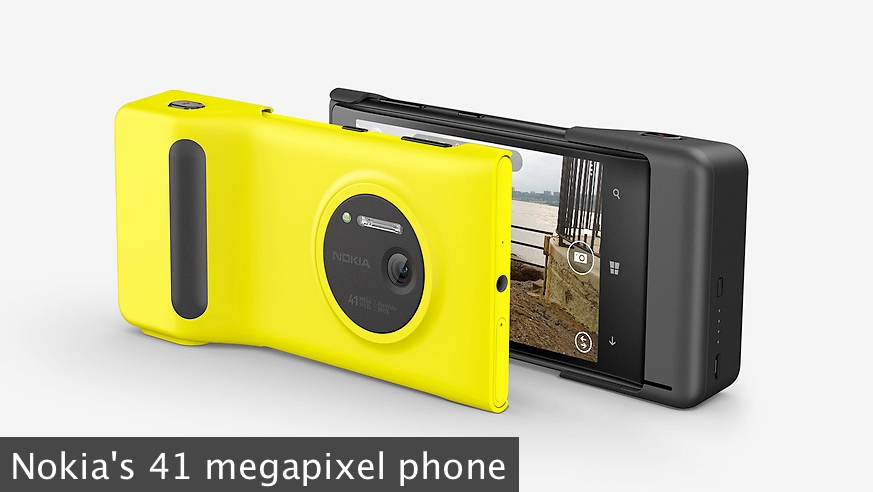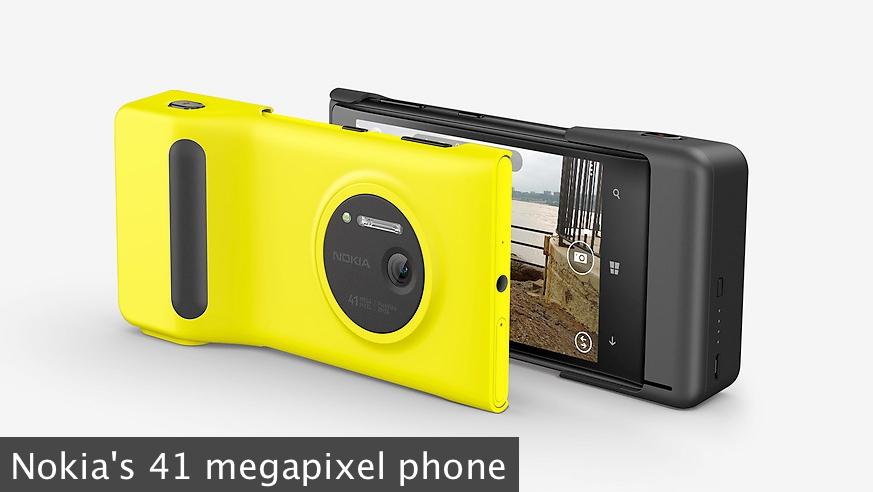
 Nokia 1020
Nokia 1020
Nokia's trying to establish a big lead in phone camera technology with it's new 1020 that sports a 41 megapixel sensor. Just to put it in video terms: that's an 8K sensor, in a phone!
Around twelve years ago, when phones started taking pictures (if you could call them that, with their pitifully low resolution) people weren't sure whether to call them phone cameras or camera phones. It was never a big problem, and, in any case, since the launch of the iPhone in 2007, we call them smartphones now.
But the arrival of Nokia's 41 megapixel 1020 phone might have us all scrabbling for a way to describe what is effectively a high quality camera with a phone attached. It's a surprising device, and one that showcases exactly how much technology we can put in our pockets these days.
Smartphones themselves are technological marvels. Nearly as powerful as a small laptop, with a touch interface and enough sensors to almost make them self-aware, they're powerful communicators as well. These days, they come with high definition screens. And with operating systems like the soon to be released iOS 7, Android and Windows Phone 8, smartphone user interfaces are years ahead of those found on most professional products.
So what happens when you couple all of this with a camera sensor with a huge resolution?
In comparison with professional products, not very much. But in terms of the power you can now have in your pocket, it makes a very big difference indeed.
So many pixels
Packing so many pixels onto a relatively small sensor (but big in Smartphone terms) is not going to give you the best low-light performance. But the idea of the 41 megapixel sensor in the Nokia 1020 is not to give you poster-sized prints, but to allow downsampling to more normal photo and video resolutions, using the information in the larger number of pixels to create a better, smaller image. The original image might be noisy, but if each downsampled pixel is the average of multiple native ones, then the final image will be much cleaner.
Digital zooming will also look better because there will be no need to interpolate beween pixels.
We're still waiting to see the first video samples from the phone but it seems likely that with what is virtually an 8K sensor to downsample 1080p from, moving images from this device will be impressive.
With Nokia putting so much effort into this phone's imaging capabilities, we wouldn't be surprised if it became a default phone for journalists and anyone who wants to capture video without having to take a bulky camera with them.
And it will be fascinating to see if any of the other phone manufacturers respond to this new class of device.
Tags: Technology


Comments